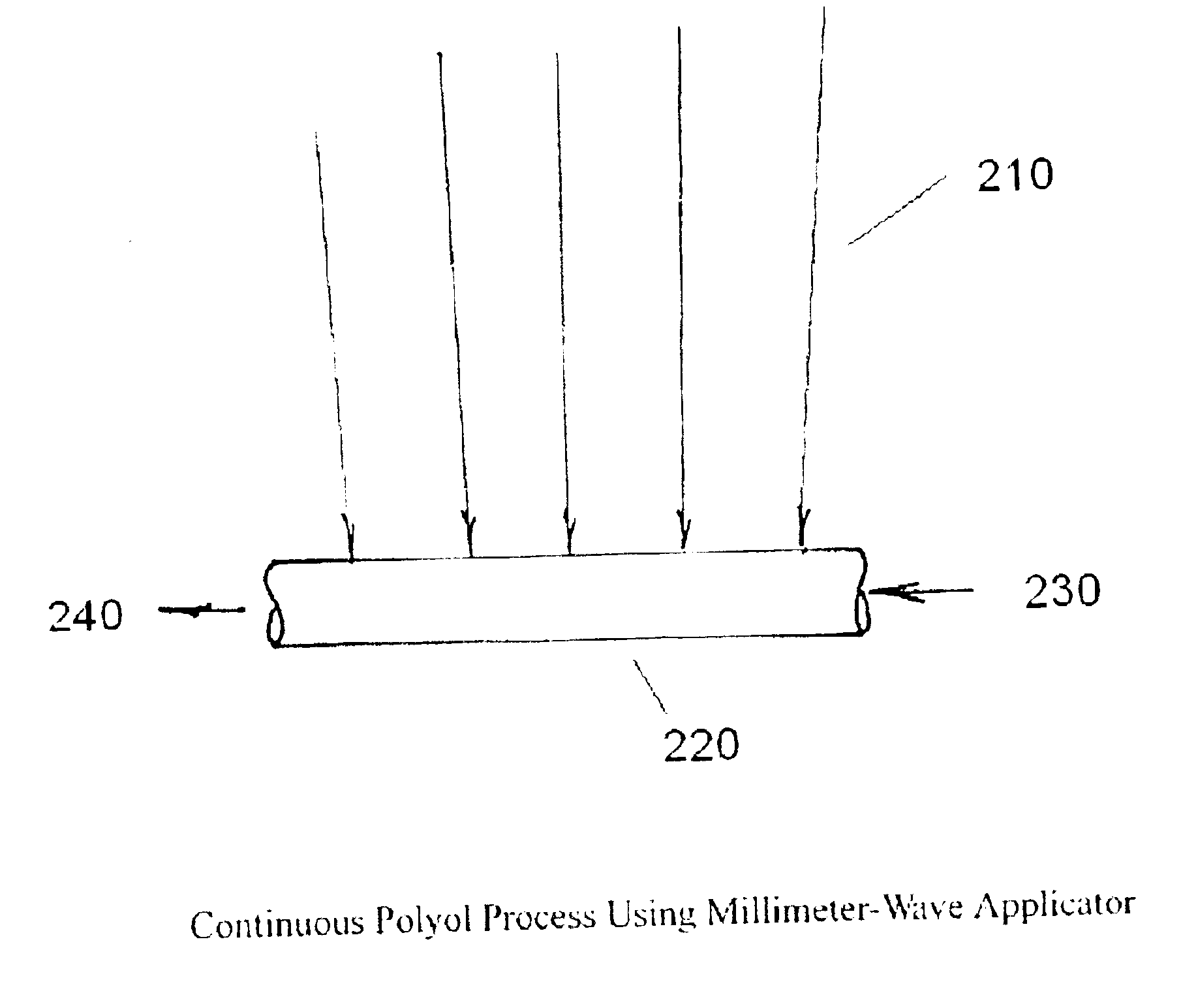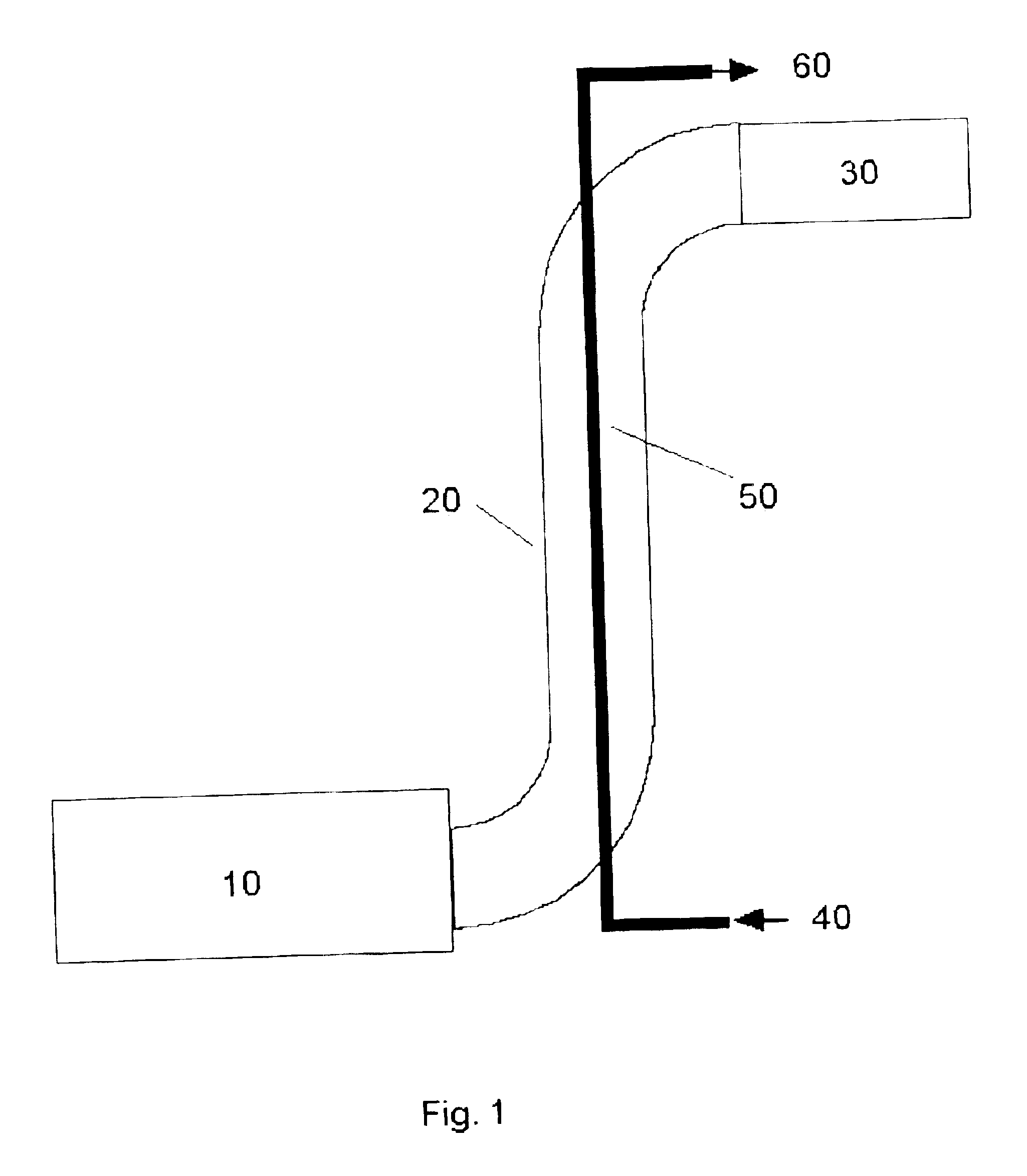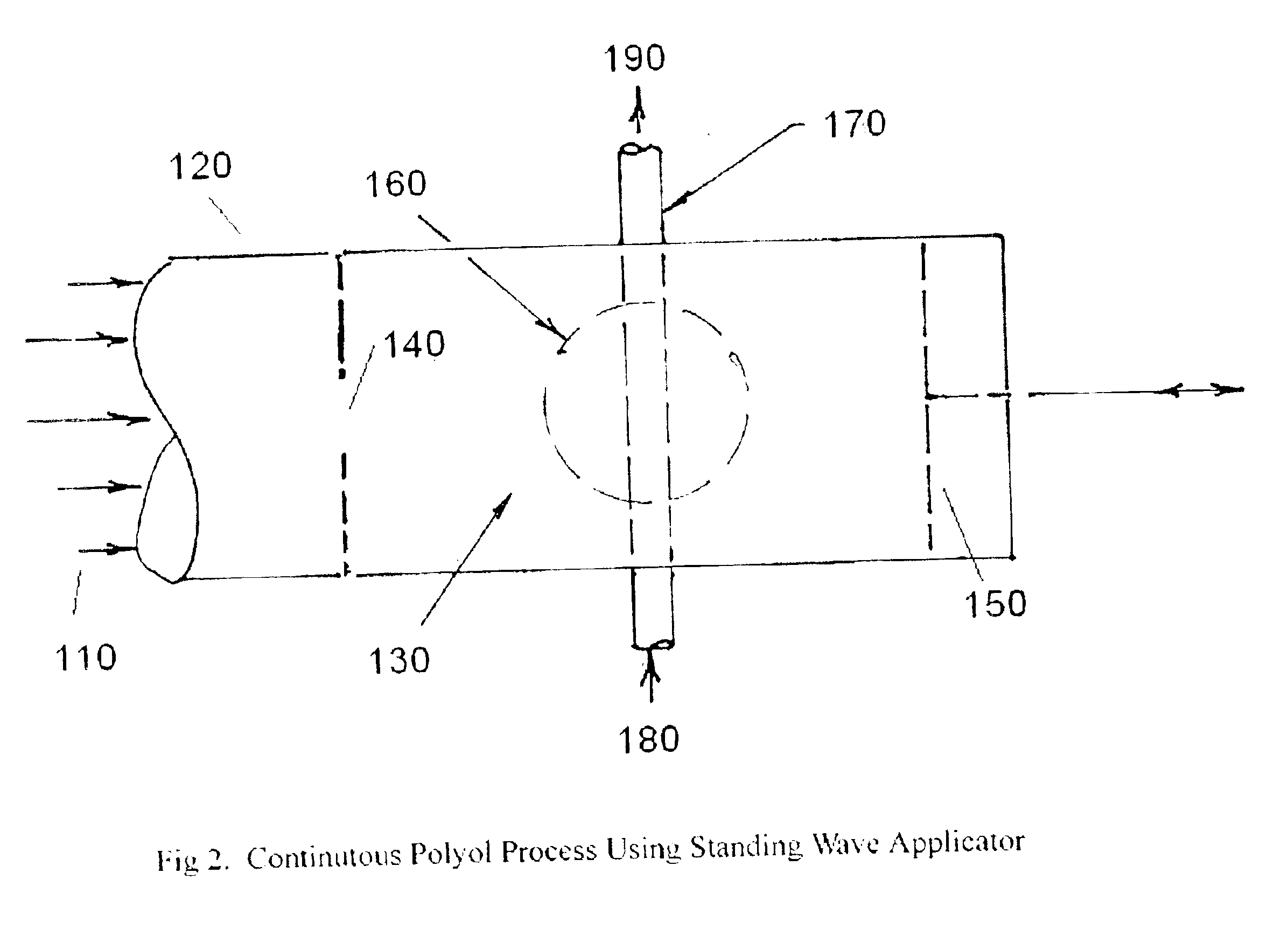Microwave assisted continuous synthesis of nanocrystalline powders and coatings using the polyol process
a nano-structured metal powder and polyol technology, applied in the direction of crystal growth process, polycrystalline material growth, transportation and packaging, etc., can solve the problems of small amount of material, low cost of initial equipment, and ineffective vapor methods
- Summary
- Abstract
- Description
- Claims
- Application Information
AI Technical Summary
Problems solved by technology
Method used
Image
Examples
Embodiment Construction
Continuous production of Cu nanoparticles--Cu nanoparticles were produced using the apparatus of FIG. 1. The reaction mixture was 0.025 M copper acetate in ethylene glycol. The microwave energy source was Cober Model S6F Industrial Microwave Generator magnetron producing 2.0 kW of 2.45 GHz microwave energy. The pump speed was set to 3 cm.sup.3 / s, which produced a residence time in the silica tube of 10 s. The temperature in the tube was maintained at 205-210.degree. C.
Cu particles were present in the effluent from the tube. The particles were kept suspended in the solvent for subsequent particle size measurement. The average particle size was 50 nm, with a bimodal distribution with peaks at 10 and 100 nm, determined by light scattering. The continuous process was operated for 300 s, producing a total of 1.5 g cu powder.
PUM
| Property | Measurement | Unit |
|---|---|---|
| Power | aaaaa | aaaaa |
| Power | aaaaa | aaaaa |
| Diameter | aaaaa | aaaaa |
Abstract
Description
Claims
Application Information
 Login to View More
Login to View More - R&D
- Intellectual Property
- Life Sciences
- Materials
- Tech Scout
- Unparalleled Data Quality
- Higher Quality Content
- 60% Fewer Hallucinations
Browse by: Latest US Patents, China's latest patents, Technical Efficacy Thesaurus, Application Domain, Technology Topic, Popular Technical Reports.
© 2025 PatSnap. All rights reserved.Legal|Privacy policy|Modern Slavery Act Transparency Statement|Sitemap|About US| Contact US: help@patsnap.com



